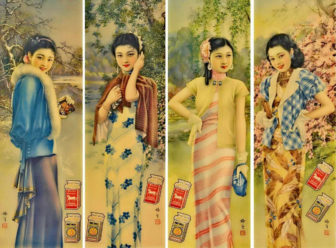 Illustrating its mission to provide global arts for a global community, Flushing Town Hall will bring the world to Queens on Saturday, May 6, when presenting Shanghai Memories: Golden Songs from the 1930s and 1940s.
Illustrating its mission to provide global arts for a global community, Flushing Town Hall will bring the world to Queens on Saturday, May 6, when presenting Shanghai Memories: Golden Songs from the 1930s and 1940s.
Narrated and hosted by pipa virtuoso Zhou Yi, the performance by the Ba Ban Chinese Music Society of New York will illustrate the cultural melting pot that was Shanghai during World War II. The lively concert will encompass traditional Shanghai music structure infused with western influences, from jazz and popular music of the day.
Featuring traditional Chinese instruments such as, pipa (four-string lute), dizi (bamboo flutes), erhu (two-string fiddle), qin (seven-string zither), as well as vocalist and western music instruments, the presentation will paint a vintage scene depicting Shanghai as the Paris of the East through the 1930s and 40s.
Tickets to the presentation – which begins at 7:30 PM – can be purchased at www.flushingtownhall.org or by calling (718) 463-7700 x222. Tickets are $16 for non-members, $10 for members and students. More details are available here.
Founded in 1999, the Ba Ban Chinese Music Society of New York is dedicated to the preservation, creation and presentation of Chinese traditional and contemporary performing arts. Based in Fresh Meadows, Queens, the organization is named after an ancient piece of folk music, “Ba Ban”, which means “eight beats”–the structural basis for the grouping of notes in traditional Chinese music.
The ensemble includes highly accomplished artists Zhou Yi, Yimin Miao, Nan Zhang, Lu Liu, Vivi Hu, Guang Yang, Changmin Jun, Daniel Silva Baterista, Ling Tang, and Guanglei Hui. These artists have performed in concert halls around the world on “silk and bamboo” (sizhu) instruments—a classical instrumental grouping dating from the Qing Dynasty. Since its founding, the ensemble has performed at Carnegie Hall, Lincoln Center, Merkin Concert Hall, the Metropolitan Museum of Art, New York University, Harvard, Princeton, Yale, Peabody Conservatory of Music, Eastman School of Music, and Longy School of Music.
“In the 1930s and 40s, Shanghai was a cultural gathering place that fostered a unique environment for creating hybrid music,” said Zhou Yi. “The boom of the foreign trading markets, the shantytowns on the riverbank of the Suzhou River, and the cultural mixture of east and west were reflected in the complex timbres of emerging Chinese pop music. This new genre of Chinese pop was both foreign and domestic as well as modern and traditional.”
Influenced by Cai Yuanpei’s (president of Peking University) idea of “east meets west, elegant yet common,” Li Jinhui, Li Jinguang, Chen Gexin, and Chen Dieyi composed a large amount of pop songs based on Chinese folk melodies. These songs later became the representative songs of the golden age of Shanghai in the 1930’s and 1940’s, known as the “golden songs.” The outstanding singing talent of Zhou Xuan, Gong Qiuxia, Yao Lee, Bai Hong, Bai Guang, Li Xianglan, Wu Yingyin, and Zhang Loo made the golden songs last for generations.
Ba Ban Chinese Music Society encourages the audience to consider the fascinating relationship between Chinese pop and Western jazz. Whether or not these songs originated in African jazz or Asian Chinese music, both genres draw influences from local traditional folk music developed from language and daily life.
Flushing Town Hall is accessible by car, bus, train and foot – located a short distance from the 7 train – at 137-35 Northern Blvd., in Flushing, Queens.
This season, Flushing Town Hall is opening its doors to teenagers – for FREE. Under the new “Teen Access Program”, all 13- to 19-year-old boys and girls (whether a member or not) will be welcomed to attend any performance for free. The program is designed to appeal to students and help foster a greater love in the arts and culture.
For Calendar Listings
Shanghai Memories: Golden Songs from the 1930s and 1940s
SAT, MAY 6, 7:30 PM
$16/$10 Members & Students
Narrated and hosted by Zhou Yi, this performance by Ba Ban Chinese Music Society is a demonstration of the cultural melting pot that existed in Shanghai during World War II, presenting traditional Shanghai music infused with western influences from jazz and popular music of the day. It paints a vintage scene, depicting Shanghai as the Paris of the East.








